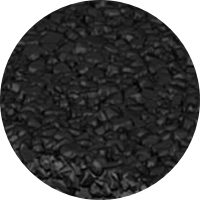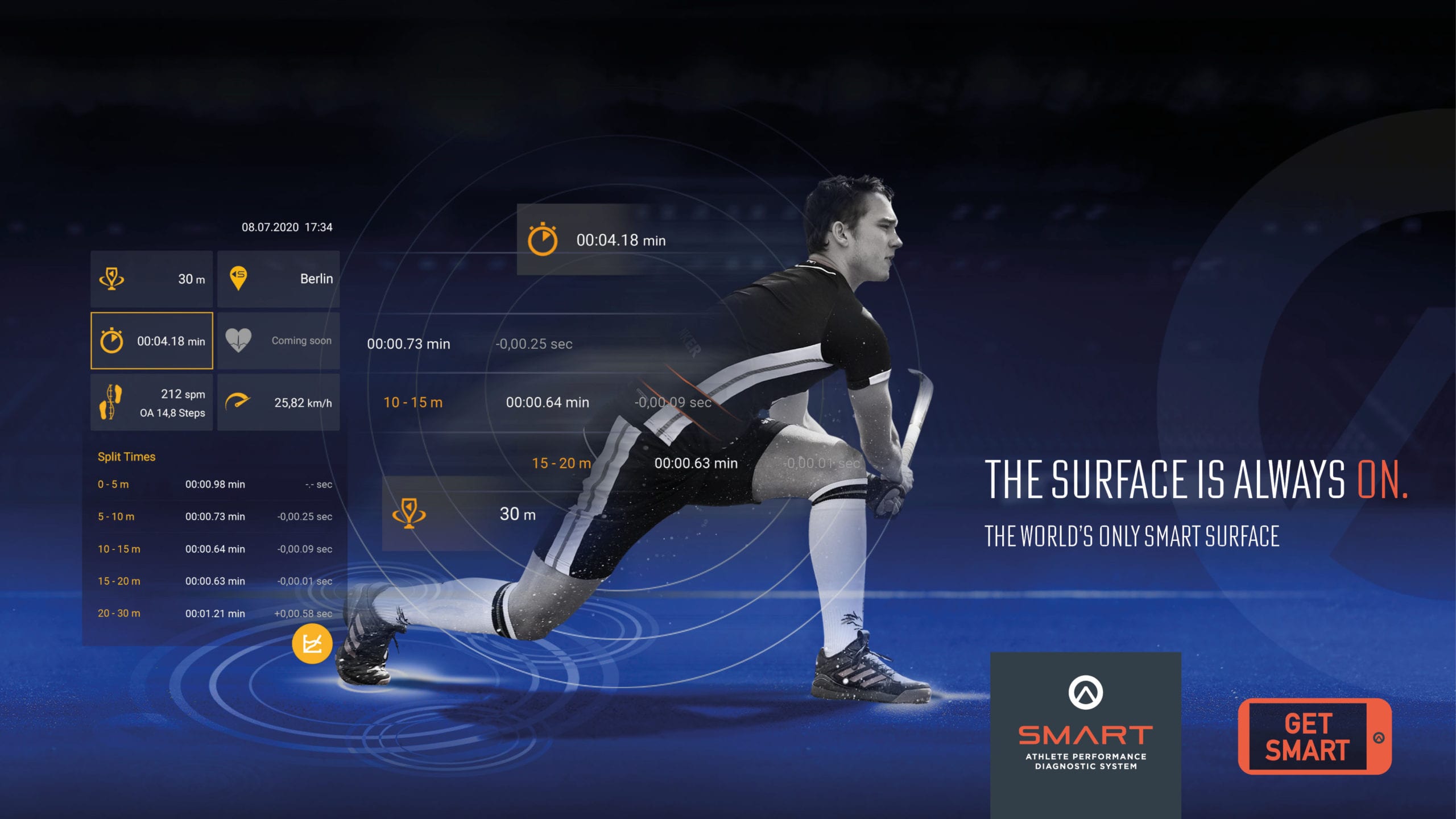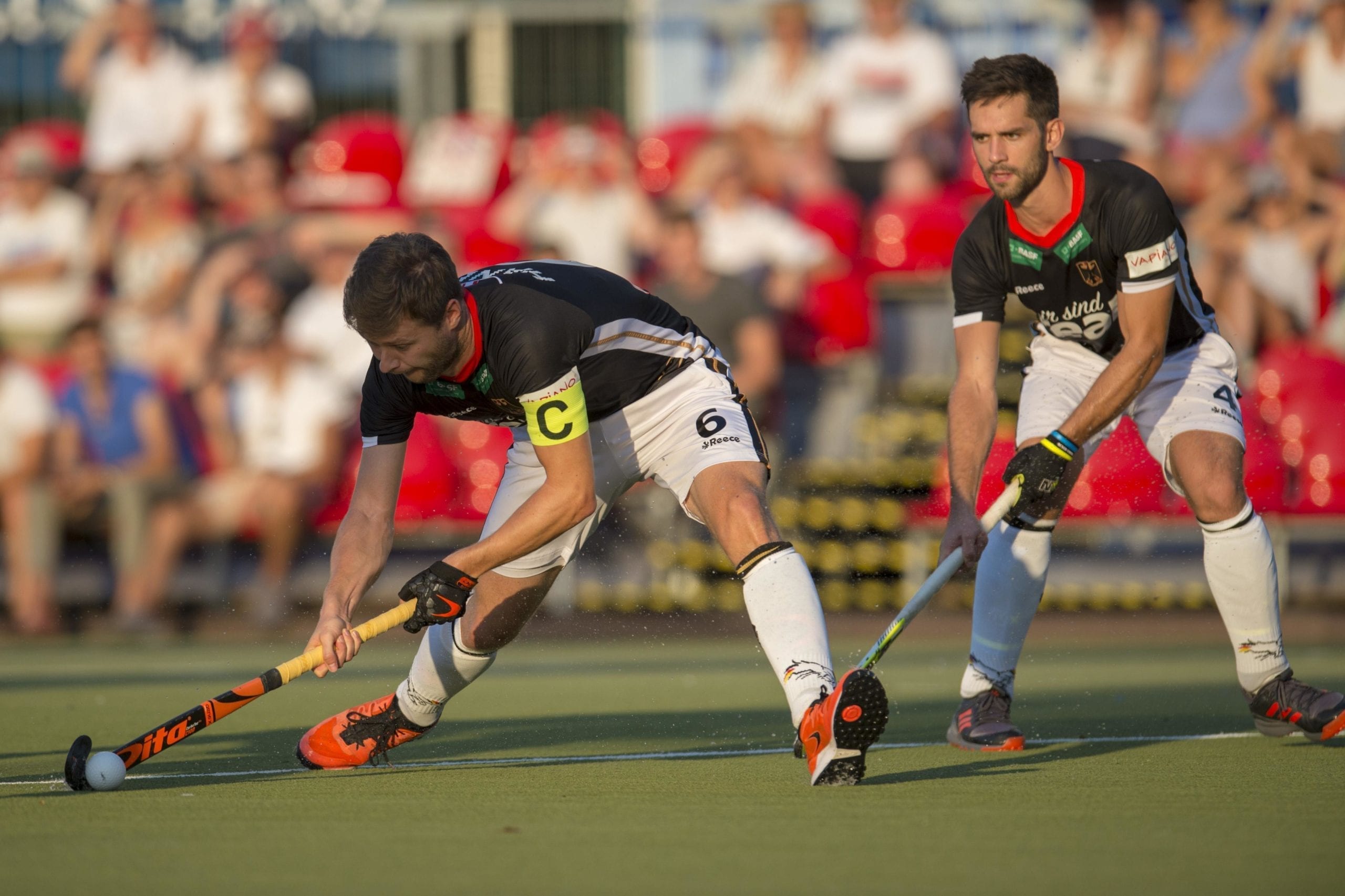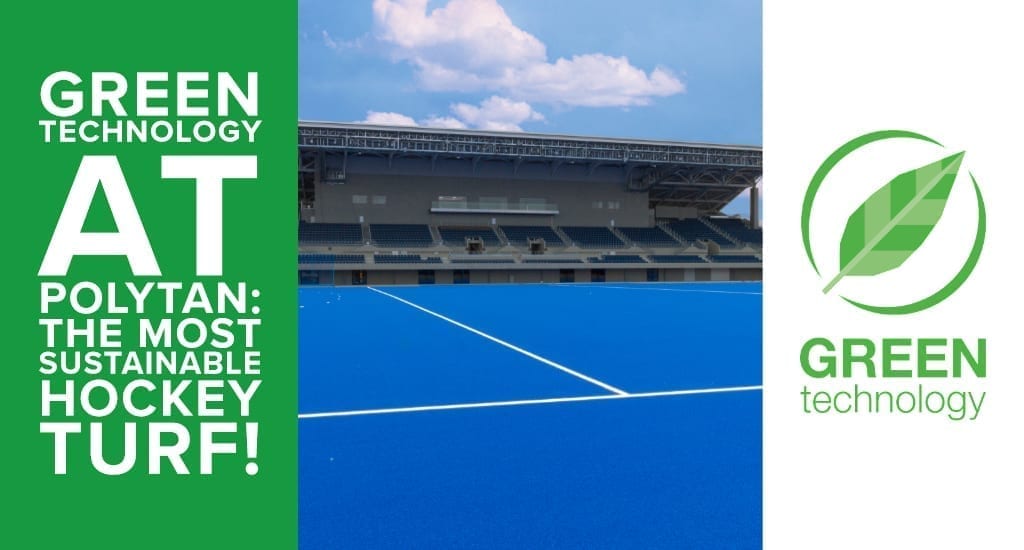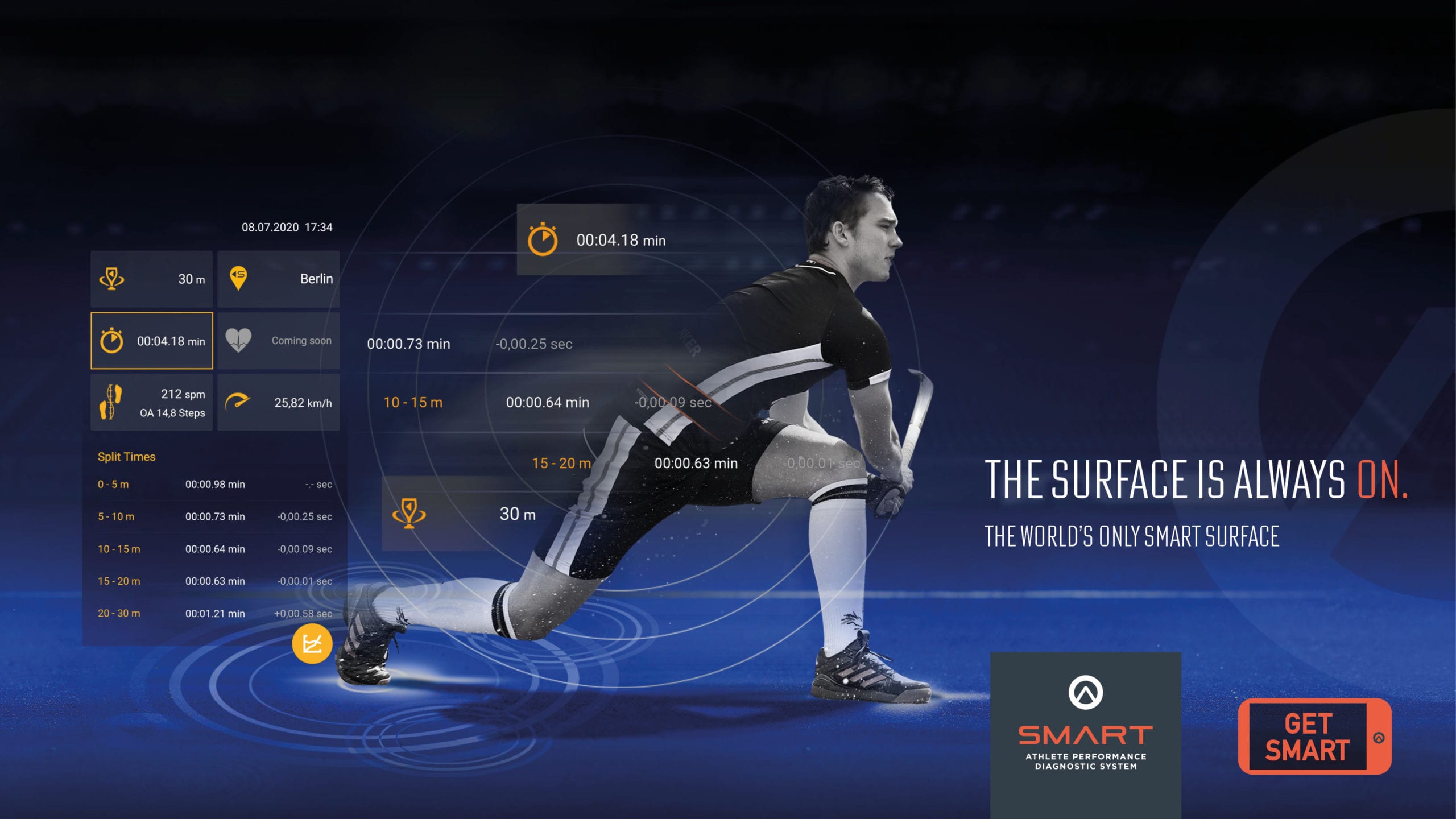Field hockey and indoor hockey: shared features and key differences
In the case of ‘classic’ hockey, a distinction can be made between field hockey and indoor hockey, whereby the indoor game originally served as a gap-filler during winter and has since come into its own as a subdiscipline. That said, when the term ‘hockey’ is used, it almost always refers to playing on grass.
Both styles use similar equipment and their principle elements are almost identical. However, there are differences: in the case of field hockey, the team consists of a goalkeeper and ten field players, plus up to five substitute players, who can be substituted in and out at any time in rapid exchanges.
By contrast, indoor hockey only involves six players per team: one goalkeeper and five field players. The reason for this is that the area in the hall is only half the size of the field hockey pitch; a field hockey pitch has dimensions of 91.4 m × 55 m (≙ 100 × 60 yards). The playing time for field hockey is 4 × 15 minutes, and time is stopped in the event of longer interruptions. Indoor matches have a playing time of 2 × 30 minutes.

International and national organisation of hockey
Internationally, the sport is organised by the “Fédération Internationale de Hockey” (FIH; International Hockey Federation), which is based in Lausanne, Switzerland. It organises various hockey competitions, such as the FIH Champions Trophy (which also serves as Qualification for the Olympic Games), the Hockey World Cup (field) and the FIH Hockey World League, whose final round has been played as the FIH Hockey Pro League since 2019.
There are currently around 86,950 hockey players registered in 376 clubs in Germany. The German Hockey Federation (DHB) is the national umbrella organisation and arranges match scheduling in both field and indoor hockey.
There is a single-track Bundesliga for men and another for women, each with 12 teams. The second Bundesliga is below this and is divided into a northern and a southern group. Beneath this are four regional leagues.
German championships have been held since 1937 for men and since 1940 for women. The record holders are the Hockey and Tennis Club of Uhlenhorst Mülheim, with 18 championships, and the Harvestehuder Tennis and Hockey Club, with 11 titles.
A sport that’s young at heart
Friends forever: synthetic turf and hockey
Field hockey was previously played exclusively on natural turf, but is most often played on synthetic turf nowadays. The primary advantages of synthetic turf are its all-weather capabilities and its even surface: the short-bladed even turf provides optimal conditions for precise, fast playing and enables better ball control, a boon not only for players but also spectators.
At the Olympics, the hockey tournament is always a major spectator magnet, and hockey fans particularly love the back-and-forth between attack and defence.
The first-ever Olympic hockey tournament on synthetic turf was held at the Montreal 1976 Olympic Games. Since then, synthetic turf and hockey have been inextricably linked. Sophisticated technology and the fast playing surface have combined to ensure that almost every hockey club today features an irrigated synthetic turf pitch.
After all, a damp synthetic hockey turf provides the ideal base for quick moves and precise ball control, and therefore the perfect conditions for professional field hockey competitions: the ball’s rolling can be better assessed and the players can move over the turf with reduced risk of injury.
Filled or unfilled? Synthetic turf systems
There are basically two system variants available for hockey: synthetic turf systems with a sand filling and unfilled synthetic turf systems. The former are suitable for multifunctional sport facilities at schools or clubs, while the latter are primarily used for pitches specifically designed for hockey, and must be watered before each use.
Polytan provides products for both variants, such as the Poligras Terra CoolPlus multifunctional turf filled with sand, and the unfilled Poligras Platinum CoolPlus fully synthetic turf, which was also the official surface for the hockey tournaments of the Rio 2016 Olympic Games.


A question of sustainability
With the latest generation of turf – the Poligras Tokyo GT – Polytan has succeeded in upgrading the modern sport with a key sustainability component. Poligras Tokyo GT’s turf blades contain up to 60% organic-based plastic made from sugar cane.
This development was made possible thanks to the pioneering GT (Green Technology) programme, through which Polytan, as an innovative company, is promoting sustainability in sport. This technology also includes the Fusion Infill GT granulate, the LigaTurf Cross GTzero and the PolyBase GT elastic layer. These environmentally friendly products containing the I’m Green bio-polyethylene raw material have been developed in close cooperation with Braskem, the world’s leading biopolymers company.
Environmentally friendly and optimised for playing: Poligras Tokyo GT
Poligras Tokyo GT turf was developed with the Tokyo 2020 Olympic Summer Games and the 2022 Hockey World Championships in mind. It has a significantly lower environmental footprint than all previous synthetic turf systems, and with an optimised turf quality: water consumption for irrigating the turf is 25% lower than standard synthetic hockey turf.
This optimised surface ensures quick and exciting hockey matches and increases the appeal of the competitions. The FIH Pro League 2019 provided a preview of what’s to come; within the scope of this top-class international hockey tournament, competitions have already been held on the new synthetic turf at the Hockeypark Mönchengladbach and at Crefelder HTC. In the case of Crefelder HTC, this was the world’s first-ever installation of the environmentally friendly Poligras Tokyo GT surface.
Successes lead to a spike in interest in Germany
German teams’ participation in the top-class international FIH Pro League and Germany’s five Gold hockey medals at the Olympic Games have helped boost hockey’s profile there. The German men’s team has won Olympic Gold at Munich 1972, Barcelona 1992, Beijing 2008 and London 2012, while the women’s team triumphed at Athens 2004. Both teams won Bronze at the Rio 2016 Olympics. In addition, Germany has enjoyed many podium appearances in World and European Championships, and in the Champions Trophy.
Part 2 of our article looks at the history of hockey and the similarities between hockey and rugby.




